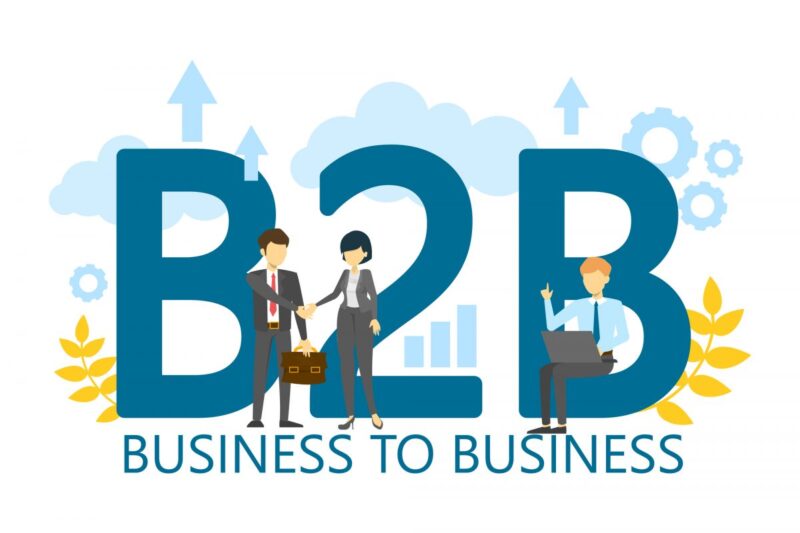In the world of business models, the Business-to-Business (B2B) model has proven to be one of the most successful, offering notable Business-to-Business (B2B) advantages and disadvantages. This model involves offering products or services to other businesses rather than directly to end consumers. The B2B model stands out due to its potential for substantial revenue and significant growth opportunities. As the B2B sector expands rapidly, more entrepreneurs are exploring various B2B initiatives. While the advantages of B2B are well-recognized, it’s crucial to understand both its benefits and limitations to navigate this field effectively from day one. This article delves into the key Business-to-Business (B2B) advantages and disadvantages to provide a comprehensive overview of what to expect.
Advantages of Business-to-Business (B2B)
1. Market Prediction
Compared to other business models such as Business-to-Consumer (B2C) or Direct-to-Consumer (D2C), the B2B model offers superior market predictability. This stability arises because B2B sectors experience more gradual growth rather than abrupt changes. This predictability allows businesses to plan effectively, anticipate market movements and strategize for long-term success. As B2B transactions often involve long-term contracts and established relationships, the market remains relatively stable, providing a clearer path for business expansion and customer acquisition.
2. Higher Sense of Customer Loyalty
B2B transactions typically involve long-term deals and extensive negotiations, leading to a higher level of customer loyalty. Unlike B2C transactions, where customers may switch providers frequently, B2B deals often result in enduring relationships. The complex and lengthy negotiation process ensures that once a deal is established, the customer is less likely to make a sudden change. This loyalty translates into consistent sales and better positioning for the business, as maintaining long-term relationships becomes crucial for sustained success.
3. Larger Deals and Better Sales
One of the standout features of the B2B model is the size of deals. B2B transactions often involve significant amounts of money due to long-term supply contracts and bulk purchases. Unlike B2C or D2C deals, which may involve smaller individual transactions, B2B deals encompass larger sums and ongoing commitments. This aspect of B2B deals results in substantial revenue generation and provides a steady flow of income, making it a financially rewarding business model.
4. Lower Cost
Operating a B2B business can be more cost-effective compared to B2C ventures. B2B marketing and sales efforts generally require less spending on advertising campaigns. This is because B2B businesses often rely on direct sales and relationship-building rather than broad-reaching marketing strategies. Additionally, automation in B2B processes, such as supply chain management and invoicing, helps reduce overhead costs. This efficiency in operations allows B2B businesses to manage their budgets effectively and minimize expenditures.
5. Data-Centric Approach
The B2B model benefits significantly from a data-centric approach. Automation and data consolidation play a crucial role in streamlining operations and improving business processes. By analyzing data from various aspects of the business—such as supply chain management, deals and customer support—B2B businesses can identify areas for improvement and optimize their strategies. This data-driven approach enhances decision-making and helps businesses fine-tune their operations for better efficiency and effectiveness.
Disadvantages of Business-to-Business (B2B)
1. Limited Market Size
One of the primary challenges of the B2B model is its limited market size. Unlike B2C models, which target a broad customer base, B2B businesses cater to a smaller, niche group of clients. This limited target market can pose challenges for business expansion and scaling operations. The focus on a specific customer segment means that B2B businesses must carefully navigate market dynamics to achieve growth and maintain a competitive edge.
2. Bargaining Power of Customers
In the B2B model, customers often wield significant bargaining power. Given the limited number of potential clients, businesses may find themselves negotiating with customers who have substantial influence over deal terms. This can include demanding discounts, extended credit periods, or other favorable conditions. For B2B businesses operating with narrow profit margins, these demands can strain financial resources and impact overall profitability.
3. Longer Negotiation and Discussion Periods
Closing a B2B deal involves a more complex and time-consuming process compared to B2C transactions. The negotiation process can extend over months due to the size of the transactions and the involvement of multiple stakeholders. Unlike the straightforward purchase of a product in a retail setting, B2B deals require extensive discussions, approvals and formalities. This extended timeline can delay revenue generation and affect cash flow.
Conclusion
The Business-to-Business (B2B) model offers significant advantages, including market predictability, higher customer loyalty, larger deals, lower operational costs and a data-centric approach. However, it also comes with its set of challenges, such as a limited market size, the bargaining power of customers and lengthy negotiation periods. Understanding these Business-to-Business (B2B) advantages and disadvantages is crucial for entrepreneurs and business owners looking to venture into this field. By recognizing both the benefits and potential pitfalls, businesses can better prepare themselves for long-term success in the B2B landscape.
















